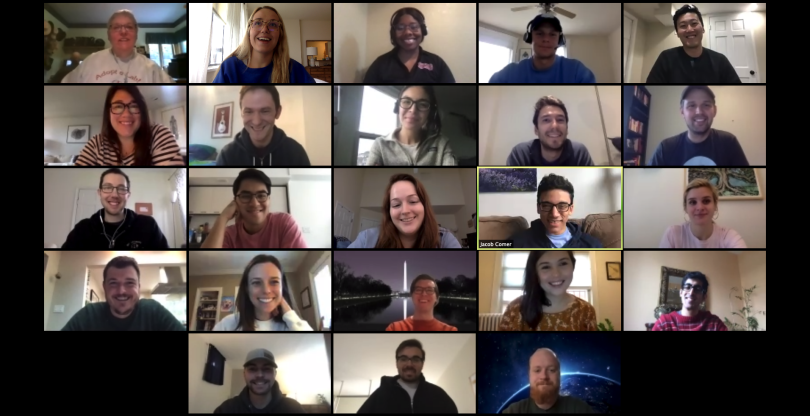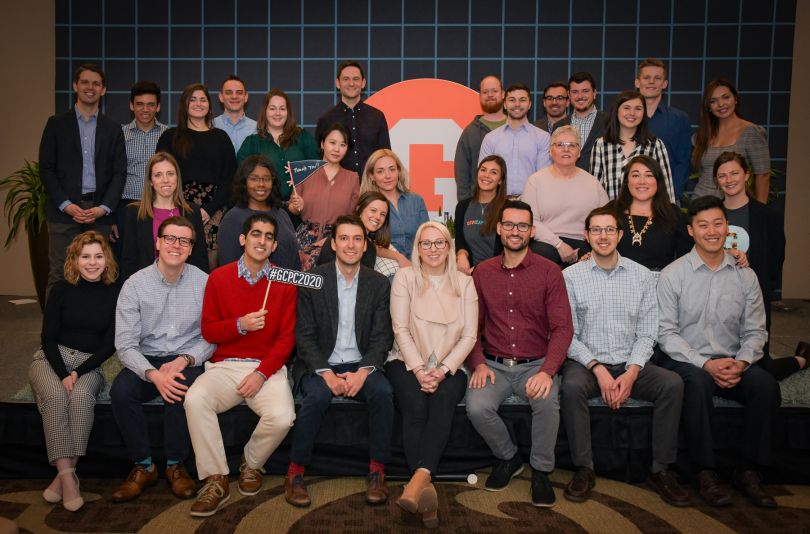The last time you picked up a call from an unknown number, only to find it was your alma mater calling to ask for a donation, did you answer it? Or did you make up an excuse to get off the phone as quickly as possible?
If you did the latter, you’re not alone. Less than 8 percent of college graduates donate to their alma mater, according to research from the Council for Advancement and Support of Education.
Maybe it’s because you’re still in student debt — more than 44 million Americans are — and you don’t feel like giving your college even more money.
In 2013, Kestrel Linder and Michael Kong realized that a lot of people feel this way about donating to their alma mater. The two college friends reconnected at a wedding and, while reminiscing, both admitted they had never donated to their university, Johns Hopkins, since graduating. After doing some research, Linder and Kong found that many people say they would donate to their school if the process wasn’t so complicated — especially because it seems that some cheerful 19-year-old student always calls to ask for donations while you’re driving, at the gym or in a meeting.
Seven years later, that idea has become GiveCampus, a social fundraising platform that aims to increase donations made to U.S. colleges and K-12 schools. The company has offices in Washington, D.C., and San Francisco, though they moved to being fully remote in early March to help prevent the spread of COVID-19.
A little more than a year after launching, GiveCampus became profitable — an impressive achievement in the tech sector where many top companies still aren’t turning a profit and within the edtech sector, which can be a complex field when it comes to profitability.
The platform offers a suite of “advocacy tools” that allow people to ask for donations on social media and then directly track the impact of their post. “You post on social and you can see how many friends are clicking on that post and donating through the platform in real-time,” said Linder, who is the company’s CEO. Last year, 17 percent of the money donated through GiveCampus came from people who directly clicked on a social media post from a friend.
As many schools across the country have had to move to remote learning due to the coronavirus pandemic, GiveCampus has begun offering all schools free access to their Giving Forms product to help boost funding and meet student needs. They also created an emergency fund hub on their website that makes it easy to find school campaigns that are collecting donations for students facing hardship right now.
When GiveCampus was preparing to launch, Linder said he and Kong were repeatedly told cautionary tales of how difficult the education market can be — that schools are notoriously tough customers and unwilling to embrace technology. Yet the company quickly achieved profitability, in part by taking a very un-Silicon Valley approach to their business — growing thoughtfully but slowly.

Selling to the toughest customers
The warnings about schools being challenging to sell to wasn’t totally unfounded, Linder said. “We heard there are really long sales cycles when selling to colleges and universities, they’re budget-constrained and they’re risk-averse.”
As they began reaching out to schools throughout the country, Linder and Kong found this to be largely true. “Most education institutions are risk-averse,” Linder said. “But we were really enthusiastic about finding a way to navigate those hurdles.”
It took time and a lot of meetings but Linder kept coming back to the same idea. If GiveCampus could build up a small but intense fire by signing on just a handful of schools willing to take the risk with an unknown company, they could make the business work.
“We found a few schools and we really invested in meeting their needs,” Linder said. “We bent over backward to make sure we knocked it out of the park for them.”
That technique was successful because those first few schools became ambassadors for GiveCampus, telling other colleges and K-12 schools how much the platform boosted their fundraising efforts. Their stories became part of the GiveCampus sales pitch.

Making edtech profitable
From the beginning, it was important to Linder and Kong that their business could fund its own growth. They didn’t want to deal with the constant stress of raising funds every couple of years. Their goal was to break even as soon as possible and they achieved that within nine to 10 months after launching their first product.
GiveCampus took less than one million dollars in funding at the very beginning. They say they haven’t needed to raise any additional venture capital since their stint at Y Combinator in 2015, and they’ve been profitable for four years now.
“It’s all about discipline for us,” Linder said. The company never had an infusion of cash all at once, so they’ve never made the mistake of spending it too quickly, he added. “The last five years we’ve been building our own mountain of cash by thinking about how, when and where we invest,” Linder said.
Keeping headcount low is one way GiveCampus was able to quickly turn a profit. They didn’t make their first hire until a year after the product launched, and they didn’t hire another person until six months after that.
Today, GiveCampus is a team of 34 with female/male parity, something they achieved by prioritizing diversity in hiring, Linder said. In addition to diversity factors like race and gender. Linder considers someone’s background important too — where they grew up, their life experiences and their level of education.
GiveCampus also intentionally doesn’t pay top market salaries. Their goal is to build a long-lasting business that’s sustainable and profitable, which would be challenging to do if they offered more competitive compensation packages, Linder argues.

A service to advance education
Whether it’s universities, community colleges or K-12 schools, Linder and Kong see GiveCampus as a bridge between people who can and want to give money and the schools that need those donations.
“Our company’s mission is to make education more accessible,” Linder said. “We see ourselves as a service to advance education.”
Public education in the United States is consistently underfunded. Private philanthropy plays an important role in making up that difference, Linder said, but it shouldn’t be expected to close the gap between a school’s budgeting needs and the funding available to them. GiveCampus aims to make it easier for a wider swath of people to donate so the entire system isn’t reliant on public funding and billionaire donations alone.
The company doesn’t regularly work with any public K-12 schools but it’s one of their goals moving forward. K-12 public schools tend to have the most funding needs but they also lack professional fundraising operations, relying instead on teacher and parent volunteers to oversee these efforts.
GiveCampus recently signed their 800th partner school and expect to reach 1,000 partner schools this year. The company continues to grow, even if intentionally slower than many other tech startups.




